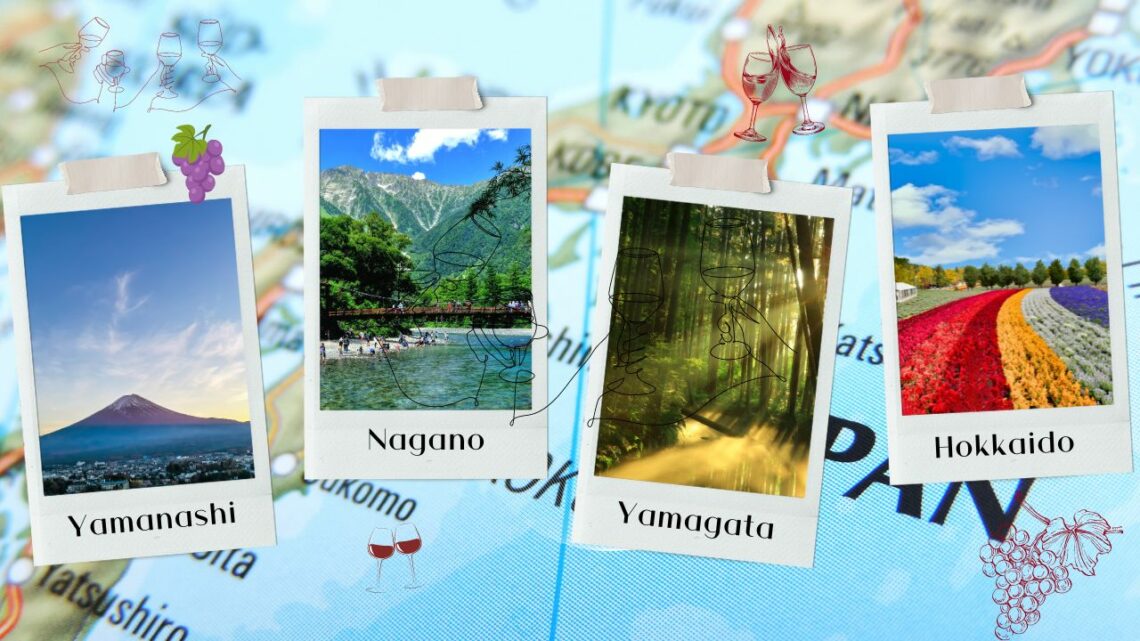
A Quick Guide to Japan’s top wine regions
Hey wine lovers! Ready to travel virtually through Japan?
Last week, we’ve talked about the history of wine in Japan. Now, let me share my quick guide to Japan’s top wine regions
Indeed, the winemaking part may be quite recent for Japan but its topography ensures Japan has very different terroirs. In other words, Japan’s wine scene is as diverse as the country itself, stretching over 3000 km from north to south.
This means you get everything from snowy winters to tropical summers, creating many different terroirs and thus many different wine styles. Due to high rainfall and humidity, Japanese winemakers have had to use hybrid grapes which often results in wines with delicate, nuanced flavors.
To make it simple, I divided Japan into four main regions: Yamanashi, Nagano, Yamagata, and Hokkaido.
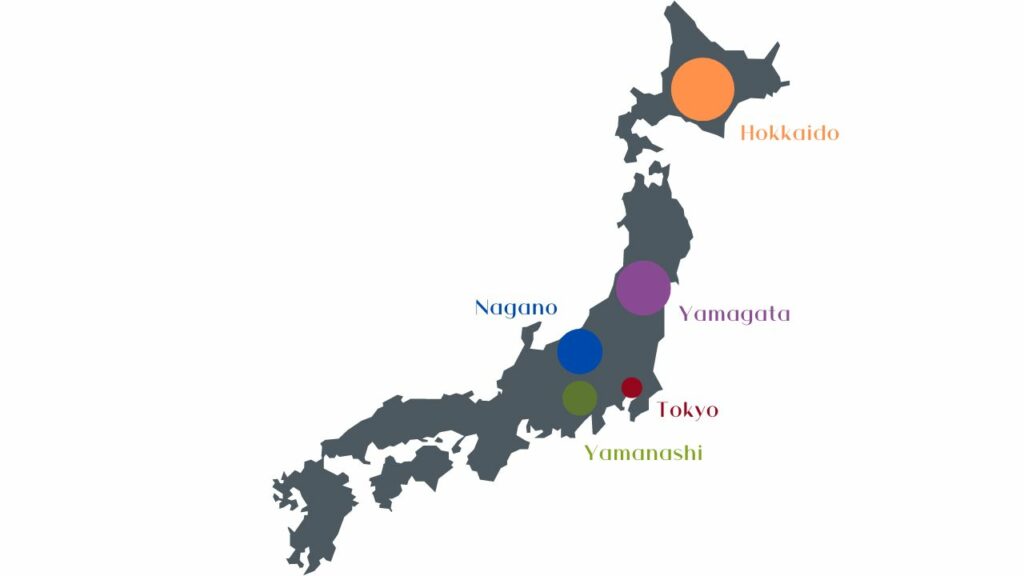
Summary : Japan’s winemaking scene is young but diverse, producing wines with delicate flavors from hybrid grapes. Key regions include Yamanashi, Nagano, Yamagata-Mogamigawa, and Hokkaido, each offering unique wines due to their distinct climates and soils. Japanese wines are light, refreshing, and perfect for pairing with Asian cuisine, reflecting the industry’s rapid evolution and growing global recognition.
Yamanashi: Where Japanese Wine Magic Began
Let’s kick things off with Yamanashi, the birthplace of Japanese wine.
This place is legendary. Imagine sipping wine with Mount Fuji in the background—talk about a killer Instagram shot!
Located just west of Tokyo, Yamanashi is home to over eighty wineries, producing about 30% of Japan’s wine.
There, the winters are mild and summers are hot and humid.
Concerning the soil, they are volcanic, which means they are rich in minerals, which will be given to the wines.
The soils are also well-drained, which is great news seeing as there’s significant rainfall in Yamanashi. This will bring freshness to the wines.
Yamanashi wines will thus be complex and fresh.
The superstar here is Koshu, a grape that’s as iconic as sushi. Koshu grapes, deeply rooted in Yamanashi’s history, offer a light, crisp flavor that pairs perfectly with Japanese cuisine.
You’ll also find hybrids like Muscat Bailey A and Delaware. They also use European varieties such as Chardonnay, Merlot, and Cabernet Sauvignon.
Nagano: The upcoming star
Next stop: Nagano.
Nagano lies in central Honshu, with elevations soaring over 3000 meters. So, naturally, the climate is cool and the soil is dry and well-drained. This area alos has less rainfall.
The high altitude and cooler climate slow down the ripening process, which lets the grape build up their fruity flavours while maintaining a high acidity. Nagano will thus have excellent acidity and complexity.
Here are the main valleys you should know, which host around 35 wineries :
- Chikumagawa Valley: This area has just started popping up on the radar with its mix of grape varieties thanks to its varying elevations.
- Kikyogahara: This valley has been making wine for ages and is surrounded by stunning mountains, making the grapes here extra special.
- Nihon Alps Valley: Still figuring things out, but this area shows great potential for some uniquely flavored grapes.
In Nagano, you’ll find a lot of hybrid varieties such as Ryugan, Concord, and Niagara, but they’re also getting into European varieties.
Young, innovative winemakers are setting up shop, making Nagano the up-and-coming star of Japanese wine. Kikyogahara Winery (ききょうがはらワイナリー) offers a selection of well-regarded wines, including their acclaimed Riesling and Merlot. They also provide guided tours and tastings, making it a great place for you to experience Nagano’s wine culture
Yamagata-Mogamigawa: Where Tradition Meets Innovation
Yamagata-Mogamigawa in Yamagata Prefecture is a must-visit.
This region lies in the Tohoku region, north of Yamanashi and Nagano. There, the summers are hot and the winters are cold. Yes, call me captain obvious, but what I mean is that there are significant temperatures variations. This will help produce grapes with high acidity and robust flavours.
Also, the soils are usually clay-gravel with excellent drainage.
Here, hybrids like Muscat Bailey A, Niagara, and Delaware are the main players, but European varieties like Chardonnay, Merlot, and Cabernet Sauvignon are quickly gaining ground.
The winemakers in Yamagata are always experimenting, making it an exciting place to explore new wines.
For instance, Yamagata hosts the Yamagata Sake and Wine Fair (Yamagata Nihonichi Bishuken Fair -literally “Yamagata: Japan’s Most Delicious Alcohol Fair”. Yup, who said Japanese people were humble?). There you can sample a range of Yamagata’s own sakes and wines.
Thanks to the region’s unique terroir, you’ll find sakes that are refreshingly crisp and fruity. Plus, the local fruit used in their wines brings out vibrant and delicious flavors.
Hokkaido: The Cool Kid on the Block (and the region I really want to visit inside out!)
Hokkaido is the cool, edgy cousin in Japan’s wine family. It’s Japan’s northernmost island.
There, winters are with substantial snow (which makes it great for skiing by the way) and the summers are dry and cool. This allows for a slow and steady ripening process, resulting in wines that will be highly aromatic and fresh (just like in Nagano).
The soils are mostly made from volcanic ash, loam, and gravel which makes pure and elegant wines.
Naturally, Hokkaido winemakers, around 35 of them, will have to focus on cold-resistant varieties. These are usually hybrids or European favorites like Pinot Noir and Chardonnay.
There are three main areas :
- Yoichi: Known for bold, flavorful wines that pack a punch.
- Sorachi-Furano: Famous for fresh, light white wines that are super refreshing.
- Tokachi: The Goldilocks of wine regions—perfectly balanced, not too strong, not too light.
Embracing the Future: Japan’s Evolving Wine Regions
Japan’s main wine regions—Yamanashi, Nagano, Hokkaido, and Yamagata—produce 85% of the country’s wine grapes. But the fun doesn’t stop there!
Wineries are popping up in places like Iwate, Tochigi, Niigata, Kyoto, Osaka, Hyogo, Okayama, Shimane, and Hiroshima on Honshu, as well as Oita, Kumamoto, and Miyazaki on Kyushu. These regions might not be household names yet, but they’re definitely proof that Japan has a growing passion for winemaking.
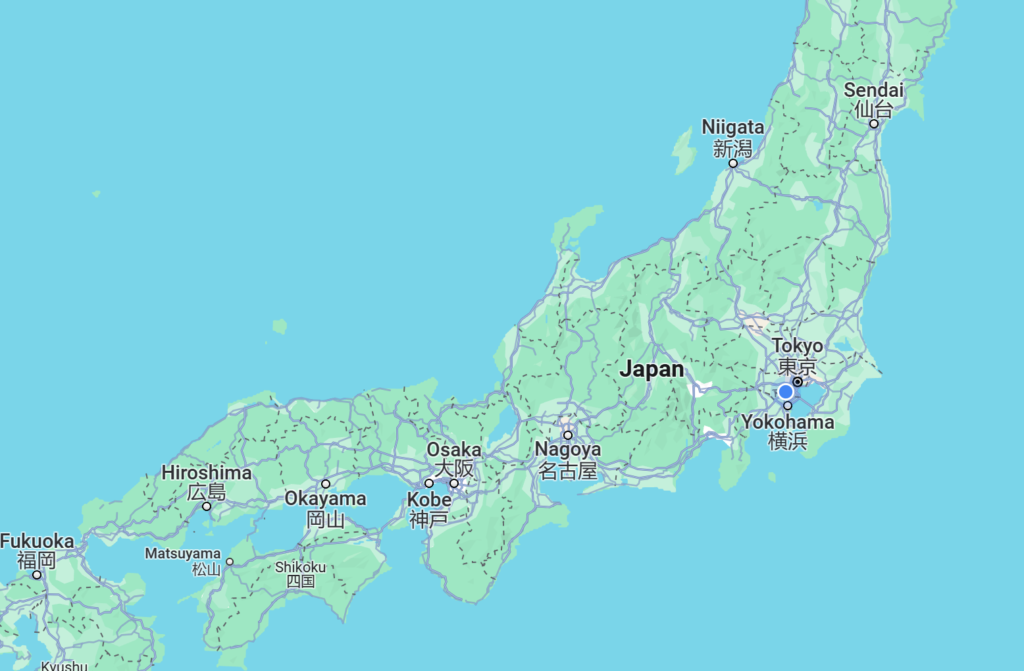
With about 280 wineries scattered across Japan, the wine industry here is constantly evolving. Japanese winemakers are always trying new things, making the scene dynamic and exciting.
Japanese wines are getting more global recognition (their numerous international awards are proof of that)
Conclusion : Japanese Wine Regions
To sum up : Japan’s winemaking scene is young but incredibly varied, thanks to its wide range of climates and topographies.
Second thing : Japanese winemakers often use hybrid grapes, resulting in wines with delicate and nuanced flavors.
Here’s a quick tour of Japan’s key wine regions:
- Yamanashi: The birthplace of Japanese wine, known for its iconic Koshu grapes and mineral-rich volcanic soils. It’s the perfect spot for a wine selfie with Mount Fuji!
- Nagano: An up-and-coming star with high altitudes and cool climates, creating wines with excellent acidity and complexity. Don’t miss valleys like Chikumagawa and Kikyogahara.
- Yamagata-Mogamigawa: Where tradition meets innovation, offering robust wines thanks to significant temperature variations and well-drained soils.
- Hokkaido: Japan’s northernmost island, known for its cool climate and volcanic soils. Expect aromatic and fresh wines from cold-resistant varieties.
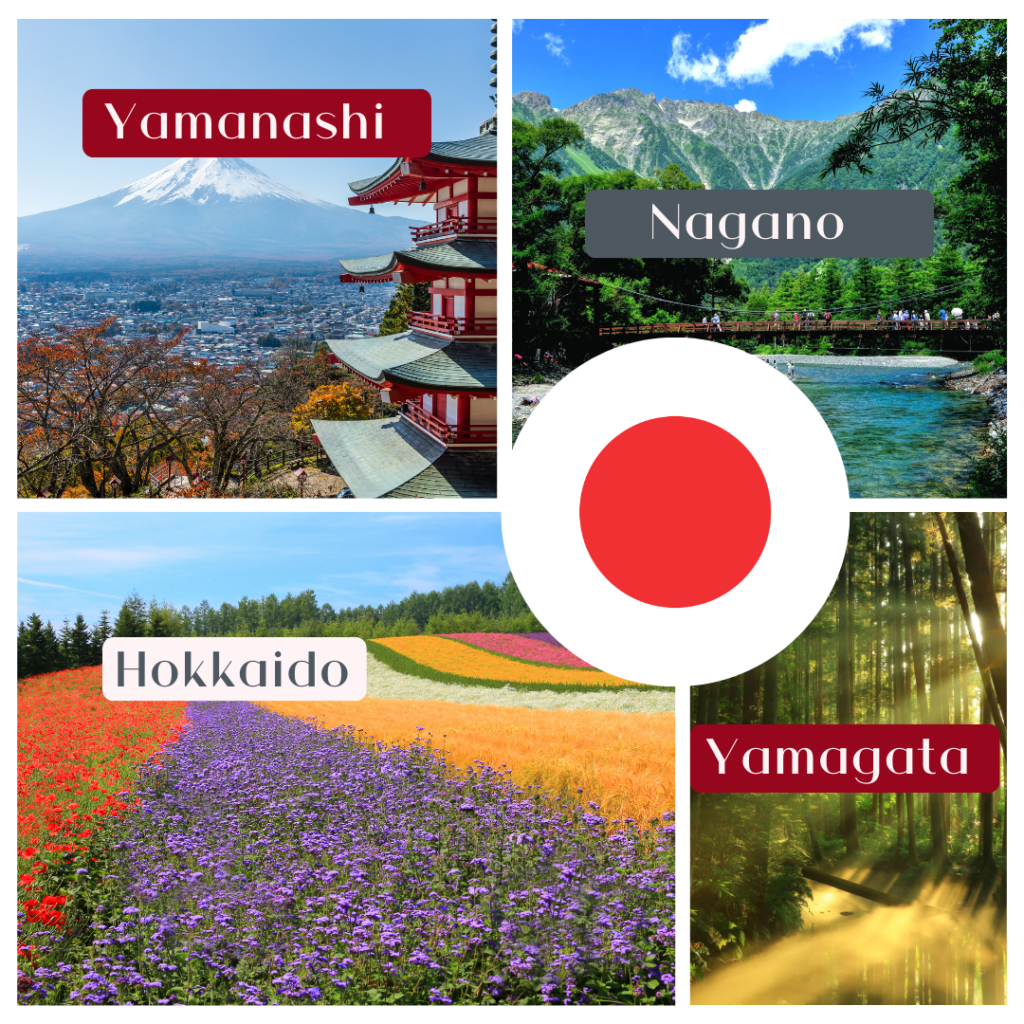
Japan’s wine industry is evolving with new wineries popping up across the country, and Japanese wines are gaining global recognition.
And what do I like most about Japanese wine? The array of flavours and (very light) alcohol. These are wines that are even lighter than Austrian ones and the fact that they use hybrid grapes give a new kick to wine.
You can either very easily enjoy a Japanese wine on a hot summer day or you can have fun pairing it with Asian food (which I find are the most difficult pairings, seeing as Asian don’t drink so much wine, meaning it’s not embedded in their culture)
Remember, my quick rule of thumb when it comes to wine and food pairing : what grows together goes together! So why not try a Japanese wine next time you’re ordering sushi?
Have you tried any Japanese wines? Share your experiences in the comments below!




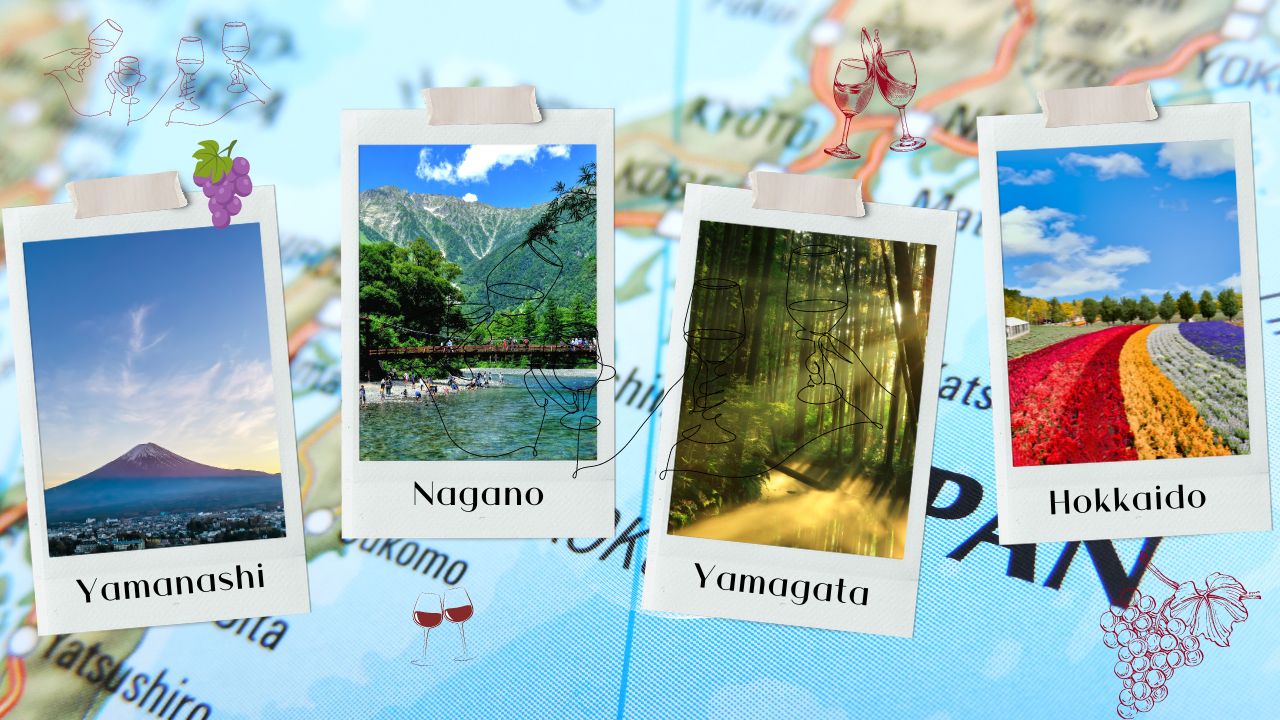
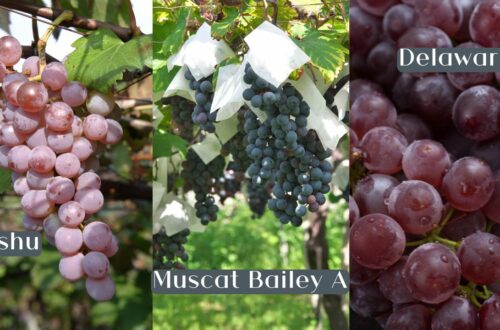
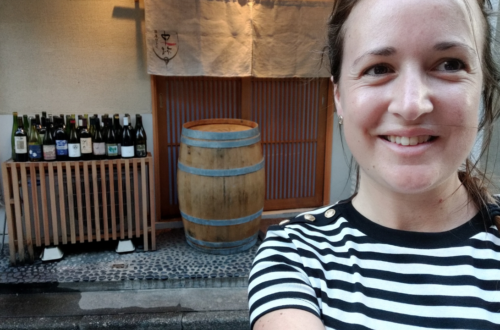
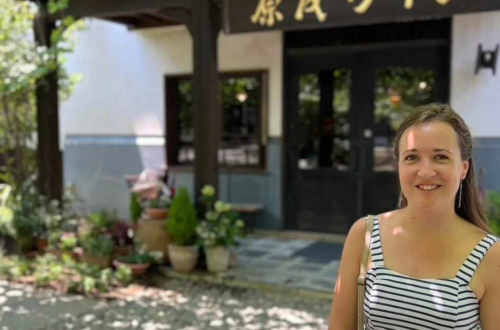
2 Comments
Jackie Deckow
Great article! I really appreciate the clear and detailed insights you’ve provided on this topic. It’s always refreshing to read content that breaks things down so well, making it easy for readers to grasp even complex ideas. I also found the practical tips you’ve shared to be very helpful. Looking forward to more informative posts like this! Keep up the good work!
Mademoiselle
Thank you so much for your comment!! I’m really glad it helped you and that you were able to know a little more about Japanese regions! Thank you so much